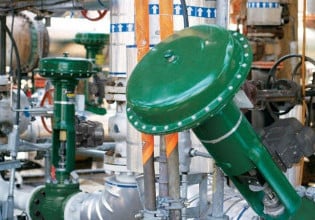Damaged batteries have forced the Swiss Solar Impulse 2 plane (Si2) to make a long stopover in Hawaii. The solar-powered plane's battery system overheated during the five-day flight from Japan. The Solar Impulse engineering team is looking into various options for better management of the cooling and heating processes for very long flights. Two more segments of the round-the-world tour will last several days: Hawaii to Phoenix and the Atlantic crossing. During the long crossing, Solar Impulse 2 rose to 28,000 feet when powered by the sun (which also recharged the batteries) every day, then glided down to about 8,000 feet at sunset and was powered through the night by the batteries before the cycle started again at sunrise.
The team made the following post on day four of the crossing: “Energy neutral evening: we are at 28 000ft and we the sun is slowly going down, we’ll soon get not enough energy to keep the airplane at that level. Batteries will all start to discharge now, very slowly in the next few hours, we’ll use the potential energy (the second energy we use!) of the aircraft until loitering altitude (8 000ft), where we’ll start discharging the batteries.â€
“During André's night-flight resting is becoming increasingly important. After all, he has been flying non-stop for almost 4 days and has broken the record for the longest-ever solo flight. At the same time, he has to be more vigilant and concentrated than ever in order to conserve as much energy as possible. The further South he flies, the longer the nights and the lower the battery charge. By the end of the night we expect them to run down to 10% of charge, the lowest we've ever experienced. He can't let the batteries run down before the sun starts to charge the solar generators!†the team commented in a later posting.
“The damage to certain parts of the batteries is irreversible and will require repairs and replacements that will take several weeks to work through,†announced the Solar Impulse team, noting that the Si2 would not fly before the beginning of August.
The battery temperature increased too much during its ascent after leaving Nagoya, Japan. The mission control team monitored this closely, but “there was no way to decrease the temperature for the remaining duration of the flight as each daily cycle requires an ascent to 28,000 feet and descent for energy management issues.â€
Solar Impulse is attempting the first ever round-the-world solar flight to encourage the adoption of clean technologies, renewable energy and energy efficiency. Since it started in Abu Dhabi in March, Si2 has completed eight legs covering nearly 18,000 km.






